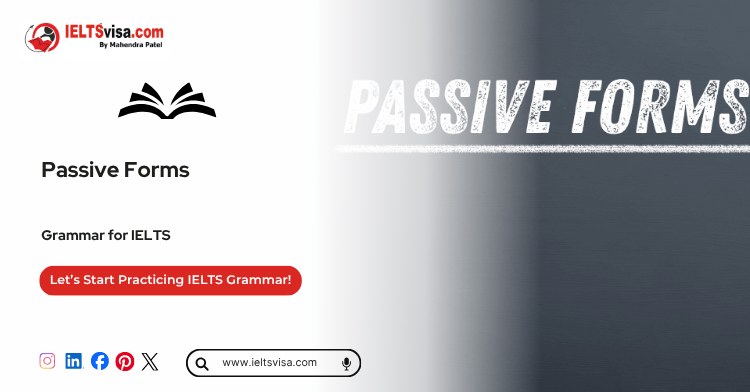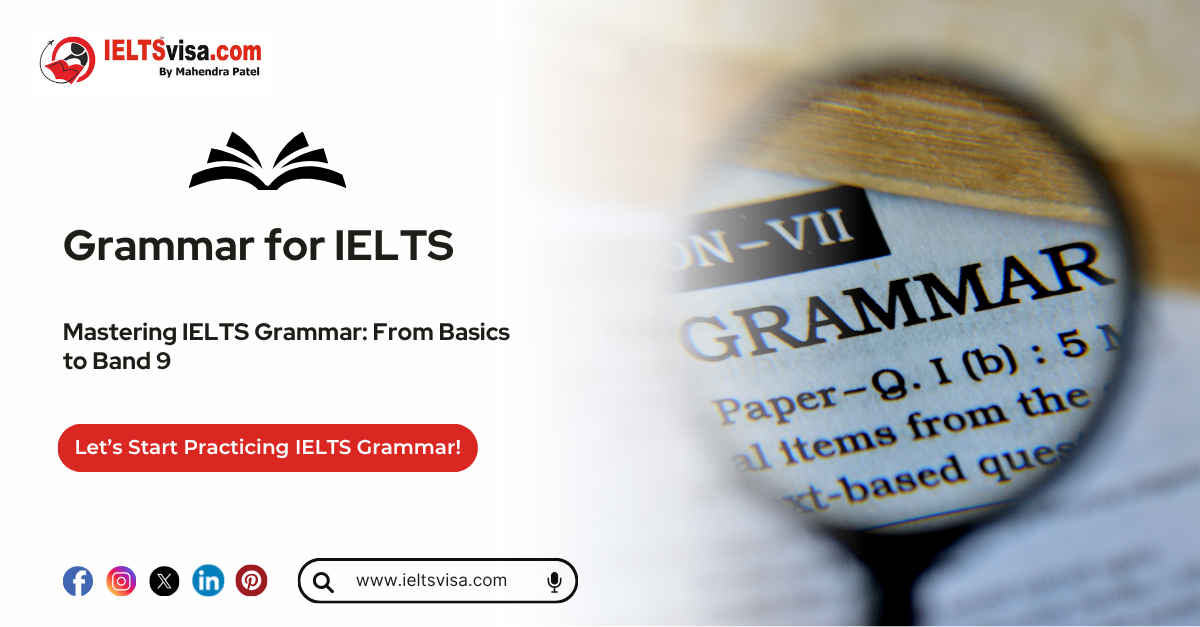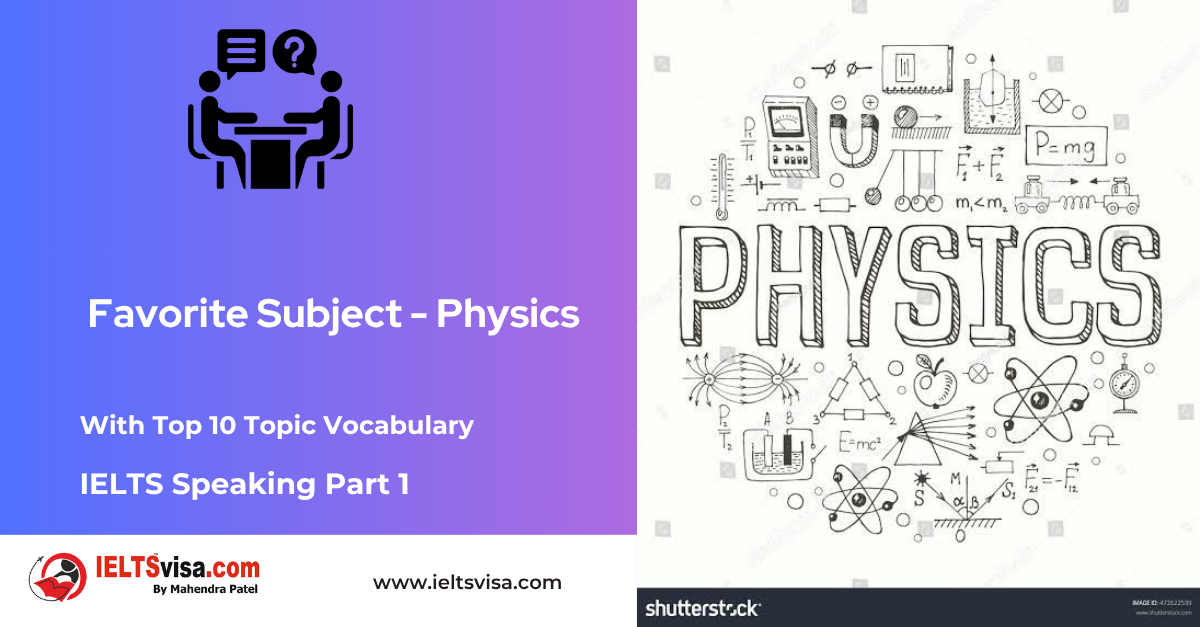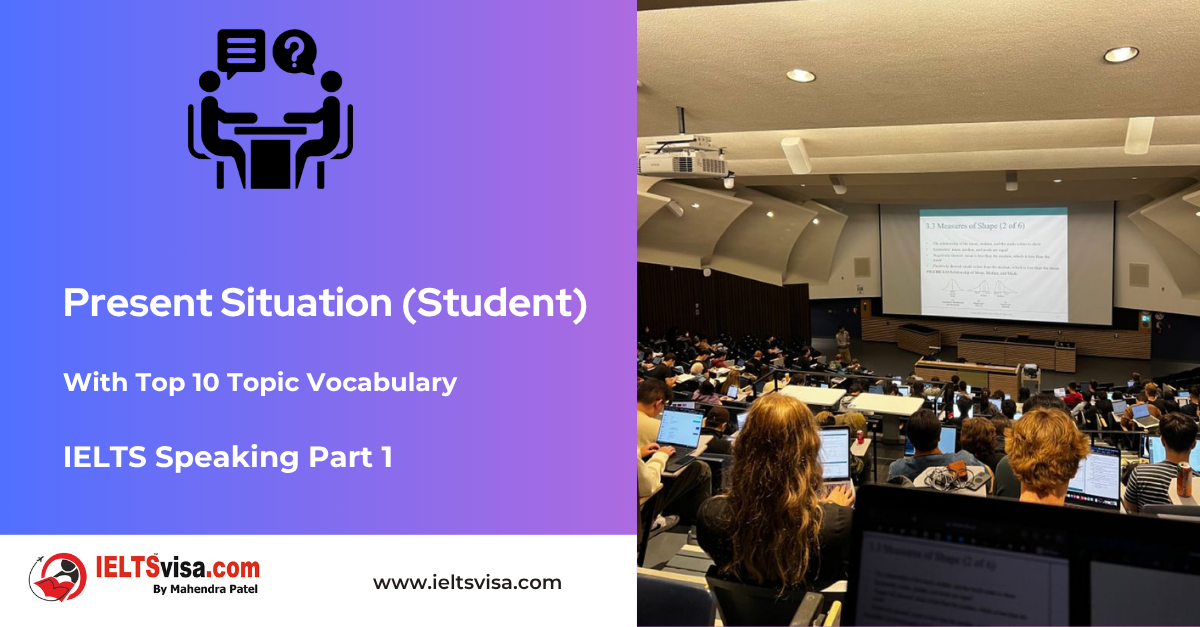Passive Forms
Grammar for IELTS

Passive Forms in English Grammar
Passive voice forms are a crucial aspect of English grammar, particularly for learners seeking to enhance their writing and communication skills. This guide provides a comprehensive explanation of passive forms, their rules, examples, and common applications. Designed for beginners and learners with limited English proficiency, this article ensures that everyone can grasp these concepts with ease.
Table of Contents
1. What Are Passive Forms?
2. Difference Between Active and Passive Voice
3. Structure of Passive Forms
4. Passive Forms in All Tenses
5. When to Use Passive Voice
6. Common Mistakes in Passive Forms
7. Advanced Applications of Passive Forms
8. Practice Exercises
9. Frequently Asked Questions
1. What Are Passive Forms?
Definition:
Passive forms are sentences where the subject receives the action rather than performing it. Instead of focusing on who performs the action, the passive voice highlights what happens or who or what is affected by the action.
Examples:
-
- Active: The chef cooked a delicious meal.
- Passive: A delicious meal was cooked by the chef.
2. Difference Between Active and Passive Voice
|
Aspect |
Active Voice |
Passive Voice |
|
Focus |
The subject performing the action. |
The object receiving the action. |
|
Structure |
Subject + Verb + Object |
Object + Auxiliary Verb + Past Participle |
|
Example |
The teacher explains the lesson. |
The lesson is explained by the teacher. |
3. Structure of Passive Forms
General Formula for Passive Voice:
Subject (Object of active sentence) + Auxiliary Verb + Past Participle + (Optional: by + Subject).
Key Points:
-
- The verb is always in its past participle form.
- Auxiliary verbs change depending on the tense of the sentence.
- The phrase “by” + subject can be omitted if the subject is unknown or unimportant.
4. Passive Forms in All Tenses
Let’s explore how to form passive sentences across different tenses:
Present Tense
1. Simple Present
-
-
-
- Active: He writes a book.
- Passive: A book is written by him.
-
-
2. Present Continuous
-
-
-
- Active: She is reading a novel.
- Passive: A novel is being read by her.
-
-
3. Present Perfect
-
-
-
- Active: They have completed the project.
- Passive: The project has been completed by them.
-
-
Past Tense
1. Simple Past
-
-
-
- Active: The manager reviewed the report.
- Passive: The report was reviewed by the manager.
-
-
2. Past Continuous
-
-
-
- Active: She was cleaning the room.
- Passive: The room was being cleaned by her.
-
-
3. Past Perfect
-
-
-
- Active: He had fixed the car.
- Passive: The car had been fixed by him.
-
-
Future Tense
1. Simple Future
-
-
-
- Active: They will announce the results tomorrow.
- Passive: The results will be announced tomorrow.
-
-
2. Future Perfect
-
-
-
- Active: He will have completed the assignment by noon.
- Passive: The assignment will have been completed by noon.
-
-
Other Forms
1. Modal Verbs
-
-
-
- Active: You can solve this problem.
- Passive: This problem can be solved by you.
-
-
2. Imperatives
-
-
-
- Active: Close the door!
- Passive: Let the door be closed!
-
-
5. When to Use Passive Voice
Key Situations:
1. When the doer is unknown or irrelevant:
-
- Example: The lights were turned off.
2. To emphasize the action over the doer:
-
- Example: The bridge was built in 1890.
3. In formal or scientific writing:
-
- Example: The experiment was conducted under controlled conditions.
4. To sound more polite or indirect:
-
- Example: Mistakes were made.
6. Common Mistakes in Passive Forms
Mistake 1: Incorrect Verb Form
-
- Incorrect: The work is complete by him.
- Correct: The work is completed by him.
Mistake 2: Unnecessary Use of Passive
-
- Incorrect: The cake was eaten by me. (Active: I ate the cake. is simpler.)
Mistake 3: Mismatched Tenses
-
- Incorrect: The house was being build.
- Correct: The house was being built.
7. Advanced Applications of Passive Forms
1. Using Passive Voice in Questions
-
- Active: Did they complete the task?
- Passive: Was the task completed by them?
2. Passive Infinitive
-
- Active: They want to complete the work.
- Passive: They want the work to be completed.
3. Passive with Modal Verbs
-
- Active: She must finish the homework.
- Passive: The homework must be finished by her.
8. Practice Exercises
Convert the following active sentences into passive voice:
1. The team won the match.
2. She is painting the walls.
3. He has solved the problem.
4. The manager will approve the request.
5. They are designing a new app.
9. Frequently Asked Questions
Q1: Can passive sentences always include “by”?
Not necessarily. The “by” phrase is optional when the doer is unknown or irrelevant.
Example: The cake was baked.
Q2: Are there cases where passive voice is better than active?
Yes, especially in formal, scientific, or impersonal contexts.
Example: The results were analyzed under strict supervision.
Q3: Why is passive voice avoided in some contexts?
Passive sentences can be wordier and less direct, making them unsuitable for casual or conversational writing.

Our Books
Master IELTS Speaking Part 1
IELTS Writing Task 1 Book
IELTS Writing Task 2 Book
Practice IELTS Other Modules
IELTS Listening
The IELTS Listening test assesses how well you can understand spoken English in various contexts. It lasts about 30 minutes and is divided into four sections with a total of 40 questions. The listening tasks become increasingly difficult as the test progresses.
IELTS Academic Reading
The IELTS Academic Reading section assesses your ability to understand and interpret a variety of texts in academic settings. It is designed to evaluate a range of reading skills, including skimming for gist, reading for main ideas, reading for detail, understanding inferences, and recognizing a writer's opinions and arguments.
IELTS Speaking
The IELTS Speaking test assesses your ability to communicate in English on everyday topics. It lasts 11-14 minutes and consists of three parts: introduction, cue card, and a discussion based on the cue card topic.
IELTS General Reading
IELTS General Reading tests your ability to understand and interpret various types of texts. Here are some key areas and types of content you can expect to encounter in the reading section, along with tips for effective preparation.
IELTS Academic Writing Task 1
In IELTS Academic Writing Task 1, you are presented with a visual representation of information, such as graphs, charts, tables, or diagrams, and you are required to summarize, compare, or explain the data in your own words.
IELTS General Writing Task 1
In IELTS General Writing Task 1, you are required to write a letter based on a given situation. The letter can be formal, semi-formal, or informal, depending on the prompt. Here’s a breakdown of the key components to include in your letter
IELTS Academic Writing Task 2
In IELTS Academic Writing Task 2, you are required to write an essay in response to a question or topic. Here’s a guide to help you understand the essential elements of this task
IELTS Exam Tips
To succeed in the IELTS exam, practice regularly, familiarize yourself with the test format, improve your vocabulary, develop time management skills, and take mock tests to build confidence.
Grammer for IELTS
Grammar is the foundation of effective communication in English. Understanding tense usage, subject-verb agreement, and sentence structure enhances clarity and coherence in writing and speaking.
Vocabulary for IELTS
Vocabulary plays a crucial role in the IELTS (International English Language Testing System) exam, especially in the Speaking and Writing sections. Here’s an overview of why vocabulary is important and how it impacts your performance
RECENT IELTS SAMPLES QUESTIONS AND ANSWERS
IELTS Speaking Part 1 – Favourite Sujbect – Physics
IELTS Speaking Part 1 - Favourite Sujbect - Physics Q: What is your favourite subject? A: My favourite subject...
IELTS Speaking Part 1 – Present Situation (Student)
IELTS Speaking Part 1 - Present Situation (Student) Q1: Are you a student or do you work?A: I’m a full-time...
IELTS Speaking Part 1 – Present Situation – Employee – as an International Student and Social Worker
IELTS Speaking Part 1 - Present Situation - Employee - as an International Student and Social Worker Q1: Are...
IELTS Speaking Part 1 – Persent Situation – Employee- as an Electric Engineer
IELTS Speaking Part 1 - Persent Situation - Employee- as an Electric Engineer Q1: What do you do for a...
IELTS Speaking Part 1 – Persent Situation – Employee – as an Software Engineer
IELTS Speaking Part 1 - Persent Situation - Employee - as an Software Engineer Q1: What do you do for a...
IELTS Speaking Part 1 – Persent Situation – Married
IELTS Speaking Part 1 - Persent Situation - Married Q1: Are you married?A: Yes, I am married. My spouse and I...













